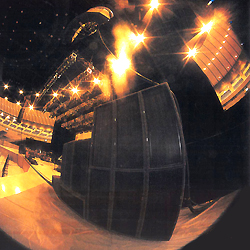
Building And Managing
If you run a regional sound company, and you’ve been busy building boxes, what happens when you, the owner, are out on the road and the call for another large system comes in. Don’t fool yourself. It’s not likely that you can assemble the talent and production management capabilities from the road while trying to keep the client happy and the show running smoothly.
From the road it’s not possible to order and receive materials, keep the router bits sharpened, handle workmen’s compensation injury issues and substitute materials when the specified ones are unavailable. Alternately, you can come home and manage it, substituting someone in the road position who may not have the same set of talents and capabilities as you. Arguably, this is a step that will need be taken at some point in the development of the company’s growth.
However, though this step may be inevitable, when it does occur, the owner’s responsibilities and use of time will be much better than the shop manager’s. Managerial functions, such as arranging financing and maintaining strong banking relationships, are vital to the success of a growing business.
On this note, let’s take a quick look at leasing.
A commercially available loudspeaker system, often representing several hundred thousand dollars or more of investment, can be leased with a 10 percent or less buy-out option from an independent leasing companies. Several loudspeaker and amp manufacturers participate in programs with leasing companies that understand the unique requirements of a touring sound company. Those who elect to build their own enclosures from scratch will not be able to take advantage of such opportunities.
For a growing company this is not a small point. Two or three one-nighters a month can make the payments on a major stadium sound system. In contrast, shelling out more than $100,000 for all of the elements of that same system could prove impossible for all but a few.
Diversification
There is a hidden value for the sound reinforcement company that has decided to purchase rather than build, and is able to draw on a family of loudspeaker products rather than a single touring loudspeaker design. As the company grows, it may not remain strictly in the touring business. Sound reinforcement for industrial theater, musical theater, audiovisual work, multi-image and other productions can bring greater revenue and broaden the market of a rental company.
As diverse rental work is taken on, the technical demands will grow to require a full line of loudspeakers, ranging from small for front-row fill in theaters or under balcony fill, to small, highly modular/high-power designs that can cover large spaces without obstructing sight lines. The rental company that chooses to concern itself with the design and manufacture of a broad line of products will have undertaken a formidable task indeed.
For comparison purposes, even a small, full-time speaker manufacturer with a wide range of products must typically employ a minimum of 20 people just for manufacturing. Most of these people are necessary even if the volume of production is quite low, because of the variety of the designs and the continual maintenance and adjustments to processes that are part of any manufacturing operation.
